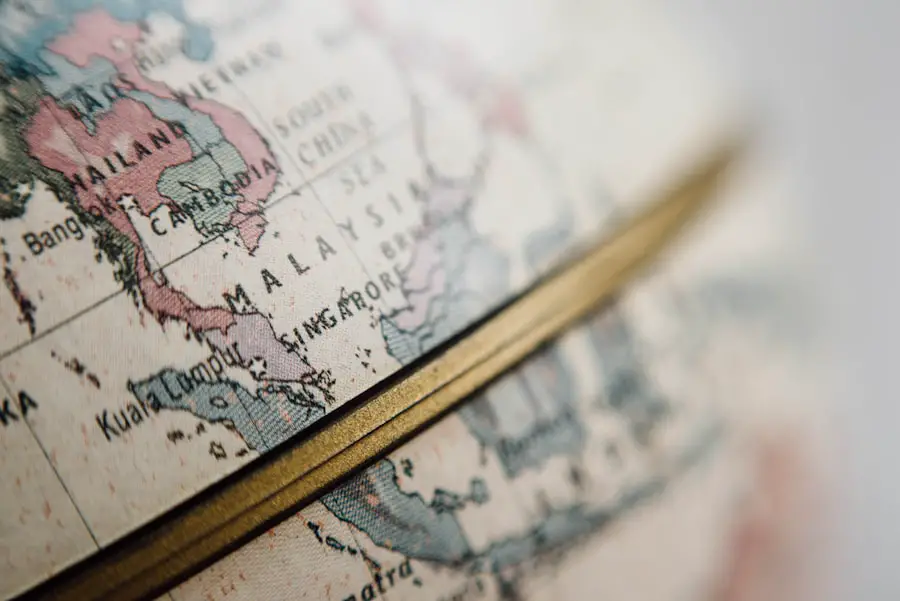Nestled high in the Andean mountains at an elevation of approximately 2,850 meters (9,350 feet), Quito, the capital of Ecuador, is a city that seamlessly blends rich history with vibrant culture. Recognized as a UNESCO World Heritage Site, its historic center boasts an array of colonial architecture, including stunning churches and plazas that reflect the city’s Spanish colonial past. The city is framed by the majestic peaks of the Andes, providing a breathtaking backdrop that enhances its charm.
Quito is not just a geographical marvel; it is also a cultural hub where indigenous traditions coexist with modern influences, making it a fascinating destination for travelers. The city’s unique location near the equator means that it experiences a variety of microclimates, which contribute to its diverse ecosystems and rich biodiversity. Visitors can explore everything from lush cloud forests to arid highlands within a short distance.
Quito serves as a gateway to many of Ecuador’s natural wonders, including the Amazon rainforest and the Galápagos Islands. This combination of natural beauty and cultural richness makes Quito an essential stop for anyone looking to experience the heart of Ecuador.
Key Takeaways
- Quito is the capital of Ecuador and sits high in the Andes mountains, known for its well-preserved colonial center and stunning views of the surrounding mountains.
- The weather in Quito is relatively consistent year-round, with mild temperatures and a wet and dry season.
- The best time to visit Quito is during the dry season from June to September, when the weather is clear and the city comes alive with festivals and events.
- If you don’t mind a little rain, the rainy season from October to May can be a great time to visit Quito, with fewer tourists and lush, green landscapes.
- Throughout the year, Quito hosts a variety of events and festivals, including the Fiestas de Quito in December and the Semana Santa celebrations in the spring.
Weather and Climate in Quito
Quito’s climate is classified as subtropical highland, characterized by mild temperatures year-round due to its elevation. The average temperature hovers around 15°C (59°F), but it can vary significantly depending on the time of day and specific location within the city. Mornings are often cool and crisp, while afternoons can warm up pleasantly, only to cool down again in the evening.
This fluctuation creates a unique weather pattern that can catch unprepared travelers off guard, making it essential to dress in layers. Rainfall in Quito is relatively consistent throughout the year, with two distinct seasons: the dry season and the rainy season. The dry season typically runs from June to September, while the rainy season spans from October to May.
However, even during the dry months, brief afternoon showers are not uncommon. The city’s altitude also means that weather can change rapidly; a sunny morning can quickly turn into an overcast afternoon. Understanding these climatic nuances is crucial for planning activities and ensuring a comfortable visit.
Best Time to Visit Quito in the Dry Season

The dry season in Quito, which occurs from June to September, is often considered the best time for travelers seeking clear skies and pleasant temperatures. During these months, visitors can expect less rainfall and more sunshine, making it ideal for outdoor activities such as hiking and sightseeing. The dry season also coincides with several local festivals and events that showcase Quito’s vibrant culture, providing an enriching experience for tourists.
One of the highlights of visiting during the dry season is the opportunity to explore the surrounding natural landscapes without the hindrance of rain. Popular destinations like Cotopaxi National Park and the nearby cloud forests become more accessible, allowing for breathtaking hikes and wildlife spotting. Additionally, the clear skies offer stunning views of the Andes mountains, making it an excellent time for photography enthusiasts. Travelers can also take advantage of outdoor markets and street fairs that flourish during this period, immersing themselves in local culture while enjoying the pleasant weather.
Best Time to Visit Quito in the Rainy Season
| Month | Rainfall (mm) | Average Temperature (°C) |
|---|---|---|
| May | 90 | 16 |
| June | 80 | 16 |
| July | 60 | 16 |
| August | 50 | 16 |
| September | 60 | 16 |
While many travelers may shy away from visiting Quito during the rainy season from October to May, this period has its own unique charm and advantages. The rain typically falls in short bursts, often in the afternoons or evenings, leaving plenty of time for exploration during the day. The lush landscapes that result from this rainfall create a vibrant backdrop for outdoor activities and sightseeing.
Additionally, fewer tourists during this season mean that visitors can enjoy a more intimate experience at popular attractions. Visiting during the rainy season also allows travelers to witness local life in a different light. Markets are bustling with fresh produce, and traditional festivals often take place during this time, showcasing local customs and traditions.
For instance, the Festival of the Virgin of El Quinche in November draws crowds with its colorful parades and religious significance. Moreover, prices for accommodations and tours may be lower during this off-peak season, making it an attractive option for budget-conscious travelers looking to experience Quito’s rich culture without breaking the bank.
Events and Festivals in Quito Throughout the Year
Quito is alive with events and festivals throughout the year, each offering a glimpse into the city’s rich cultural tapestry. One of the most significant celebrations is Fiestas de Quito, held in early December to commemorate the founding of the city. This week-long festival features parades, concerts, traditional dances, and food fairs that celebrate Quito’s heritage.
The streets come alive with music and color as locals and visitors alike participate in various festivities. Another notable event is Inti Raymi, or the Festival of the Sun, celebrated in June to honor the Incan sun god Inti. This festival includes traditional music, dance performances, and rituals that pay homage to indigenous heritage.
Visitors can witness vibrant processions through the streets of Quito as participants don traditional attire and engage in age-old customs. These events not only provide entertainment but also serve as an opportunity for travelers to connect with local communities and gain insight into Ecuadorian culture.
Tips for Traveling to Quito in Each Season

Traveling to Quito requires some preparation to ensure a comfortable experience regardless of the season. During the dry season, it is advisable to pack lightweight clothing suitable for warm afternoons but also include layers for cooler mornings and evenings. A good pair of walking shoes is essential for exploring both urban areas and natural landscapes.
Sunscreen is also crucial due to higher UV exposure at altitude. In contrast, when visiting during the rainy season, waterproof clothing becomes indispensable. A light rain jacket or poncho can make outdoor excursions more enjoyable despite occasional downpours.
It’s wise to carry an umbrella or a compact raincoat while exploring the city. Additionally, travelers should consider adjusting their itineraries to accommodate potential rain showers; planning outdoor activities for mornings when rain is less likely can enhance their experience.
Outdoor Activities and Sightseeing in Quito by Season
Quito offers a plethora of outdoor activities that cater to various interests throughout the year. In the dry season, hiking enthusiasts can take advantage of clear skies to explore trails in nearby national parks such as Cotopaxi or Chimborazo. These parks offer stunning vistas and opportunities for wildlife observation, including llamas and various bird species native to the region.
The dry weather also makes it ideal for visiting attractions like Teleférico de Quito, where visitors can take a cable car ride up Pichincha Volcano for panoramic views of the city. During the rainy season, while some outdoor activities may be limited due to wet conditions, there are still plenty of options available. The rain nourishes the lush vegetation in places like Parque Metropolitano Guangüiltagua, making it an excellent time for birdwatching or leisurely walks through verdant trails.
Additionally, cultural sites such as La Mitad del Mundo (the Middle of the World) remain accessible year-round and provide fascinating insights into Ecuador’s geographical significance as a country straddling the equator.
Conclusion and Final Recommendations for Traveling to Quito
Traveling to Quito offers an enriching experience filled with cultural immersion and breathtaking natural beauty regardless of when one visits. Each season presents unique opportunities for exploration and engagement with local traditions. Whether you choose to visit during the dry season for its clear skies or embrace the rainy season’s lush landscapes and vibrant festivals, preparation is key to making the most of your trip.
Ultimately, understanding Quito’s climate patterns will help you plan your itinerary effectively while ensuring you pack appropriately for your chosen travel dates. Engaging with local events and festivals will deepen your appreciation for Ecuadorian culture while providing memorable experiences that go beyond typical tourist attractions. With its rich history, stunning scenery, and warm hospitality, Quito stands out as a must-visit destination in South America that promises adventure and discovery at every turn.
FAQs
What is the best time to travel to Quito?
The best time to travel to Quito is during the dry season, which runs from June to September. This is when the weather is mild and there is less chance of rain.
What is the weather like in Quito during the best time to travel?
During the dry season, the weather in Quito is mild with average temperatures ranging from 50°F to 70°F (10°C to 20°C). There is also less chance of rain during this time.
Are there any specific events or festivals during the best time to travel to Quito?
Yes, during the dry season, Quito celebrates its founding with a week-long festival in July called “Fiestas de Quito”. This festival includes parades, concerts, and other cultural events.
What are the popular tourist attractions to visit during the best time to travel to Quito?
Popular tourist attractions to visit in Quito during the best time to travel include the historic Old Town, the Teleferico cable car for panoramic views of the city, and the Mitad del Mundo monument marking the equator.
Is it crowded during the best time to travel to Quito?
Quito can be crowded during the best time to travel, especially during the Fiestas de Quito festival in July. It is advisable to book accommodations and tours in advance.
